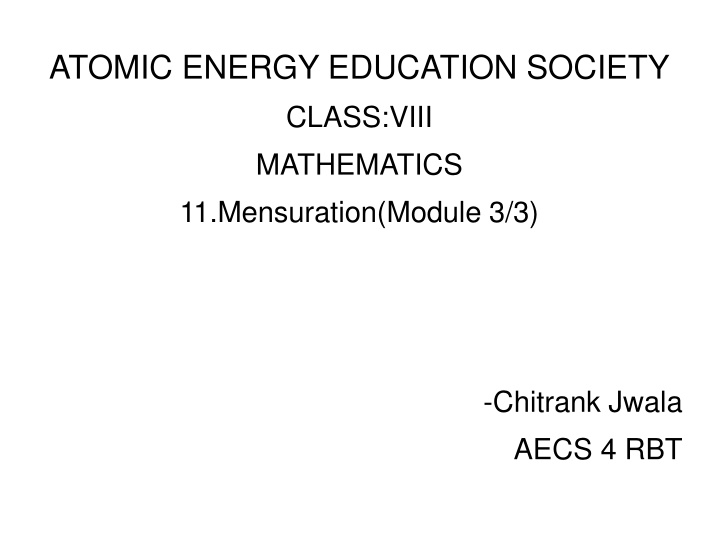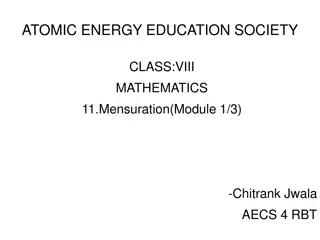
Volume of Cube, Cuboid, and Cylinder in Mathematics Class VIII
Learn how to calculate the volume of cube, cuboid, and cylinder with the help of cubic units. Understand the concepts of arranging cubes to form solids and determining their volumes based on dimensions. Explore the special cases of cubes and gain insight into mensuration in mathematics.
Download Presentation

Please find below an Image/Link to download the presentation.
The content on the website is provided AS IS for your information and personal use only. It may not be sold, licensed, or shared on other websites without obtaining consent from the author. If you encounter any issues during the download, it is possible that the publisher has removed the file from their server.
You are allowed to download the files provided on this website for personal or commercial use, subject to the condition that they are used lawfully. All files are the property of their respective owners.
The content on the website is provided AS IS for your information and personal use only. It may not be sold, licensed, or shared on other websites without obtaining consent from the author.
E N D
Presentation Transcript
ATOMIC ENERGY EDUCATION SOCIETY CLASS:VIII MATHEMATICS 11.Mensuration(Module 3/3) -Chitrank Jwala AECS 4 RBT
Volume of Cube, Cuboid and Cylinder Amount of space occupied by a three dimensional object is called its volume. Remember, we use square units to find the area of a region. Here we will use cubic units to find the volume of a solid, as cube is the most convenient solid shape (just as square is the most convenient shape to measure area of a region). For finding the area we divide the region into square units, similarly, to find the volume of a solid we need to divide it into cubical units.
Observe that the volume of each of the adjoining solids is 8 cubic units (Fig 11.42 ).
Cuboid Take 36 cubes of equal size (i.e., length of each cube is same). Arrange them to form a cuboid.You can arrange them in many ways. Since we have used 36 cubes to form these cuboids, volume of each cuboid is 36 cubic units. Also volume of each cuboid is equal to the product of length,breadth and height of the cuboid. we can say volume of cuboid = l b h. Since l b is the area of its base we can also say that,
Cube The cube is a special case of a cuboid, where l = b = h. Hence, volume of cube = l l l = l3 Cylinder






















